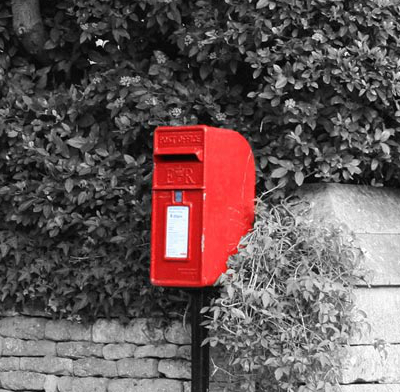Green Cleaning Innovations

Green cleaning has to do with the use of environmentally safe products and techniques in commercial cleaning. Though it is not completely new in the industry, it is one of the most on trend innovations when customers are assessing your proposal and business offer. Any company taking ownership for the health and safety of both the cleaner and the clients by encouraging the use of eco-friendly products in janitorial services will be seen as responsible. Technology is revolutionizing how we clean in incredible ways, with innovations allowing businesses of all sizes to keep their premises responsibly clean without overspending.
Some of these technologies include implementing greener equipment cleansers, using more efficient vacuums and mops for improved water and electricity conservation, not simply switching to more natural products like soaps and waxes. Cleaning chemicals can cause dangerous gases causing headaches, dizziness, wheezing, even lung damage. The environment is one consideration, however chosing to replace traditional industrial cleaners will benefit people in your workspace directly, too.
Innovations we are seeing include;
Electrostatic Sprayer Disinfecting
This incredible new way to apply cleaners, sanitizers, and disinfectant works on almost all surfaces, often in less time and with better coverage than traditional cleaning methods. It is well established in areas such as agriculture, automotive, and tanning. It electrostatically charges liquids, such as sanitizers and disinfectants, as they pass through the spray nozzle. It generates charged droplets that repel one another and actively seek out a surface. When used correctly, these charged droplets can coat all sides of a surface, forming a uniform layer of spray in even hard to reach areas that manual cleaners may miss. Commercial building cleaning services should consider using this innovative technology as it can be highly beneficial to ensure good sanitation strategies.
UV-C Sanitizing Wand
Disinfecting water with UV light is simple, effective and environmentally safe. UV systems are designed to destroy at least 99.99 percent of harmful microorganisms without added chemicals, taste changes or odour. UV treatment does not alter water chemically. Nothing is added except energy, which means it can be used across a range of applications and industries. This method of cleaning has been used industrially for years, however the trend to bring hand held wands into your home and work place, may cause health issues where not used correctly and where surfaces are not bare. The UV can also cause skin damage in anyone using and long term effects are unknown.
Antimicrobial Surface Treatment
This new system uses a salt-based, chemical-free process, where water passes through the system giving it an electrical charge. The solution cleans and sanitizes surfaces leaving it 99% germ free.
Pure Water
Water is a naturally impure liquid and these impurities can interfere when using it for cleaning, as microscopic deposits can cause streaks or marks and windows, for example, may not look as clean as they might. Pure water is plain H2O. No other elements like salts and dissolved solids are present.
Pure water has all the impurities removed by a process called reverse osmosis and because water is naturally impure, it wants to return to its natural state. This means that when pure water is applied to a surface it will absorb the deposits from it, leaving the surface clean and streak free.
The obvious and most common use for this technology is in window cleaning, where the old method of using soapy water, cloths and ladders is being phased out as more window cleaners turn to pure water cleaning.
There are other uses like the Karcher Solar Panel Cleaner which uses pure water instead of abrasive cleaning materials to clean solar panels.
Ozone
Ozone gas is an oxidant which means that it will break down target materials such as mould or tobacco stains which cause unwanted and lingering odours and thus provide a quick and effective solution for stubborn smells, viruses and pathogens. Ozone gas oxidises and neutralises the very cause of the odour. To improve the hygiene, remove odour and increase the efficiency of your kitchen, changing room or office.
Ozone Generator FAQ's | Ozone General Information | London | UK (ozoneclean.co.uk)
Battery-powered Equipment
Latest News
Elevating Operational Efficiency: Red Box Consultancy Services Ltd. Empowering Independent Schools
Specialised Contract Cleaning
Dean Douthwaite Joins Red Box Conusltancy Services
Merry Christmas 2023 - from all the Red Box Team!
Unwrapping the Magic: Top Tips for a Stress-Free Christmas Lunch Preparation
The Brew Battle: Pros and Cons of 'Proud to Serve' Coffee Concessions vs. Non-Branded Coffee in Catering Facilities
Useful Links to Further Information
- THE BRITISH INSTITUTE OF FACILITIES MANAGEMENT (BIFM)- Founded in 1993, BIFM is a professional body for facilities management, both individuals and organisations.
- FIRST POINT ASSESSMENT (FPAL)- Is a supplier management community supporting the European oil and gas industry.
- THE CHARTERED INSTITUTE OF ENVIRONMENTAL HEALTH (CIEH)- A charity that is the professional and leading voice for environmental and public health and safety.
- INSTITUTE OF HOSPITALITY- A professional membership group that provides support and information for those who work or study in the hospitality and tourism industries.
- FOOD STANDARD AGENCY (FSA)- The governmental department responsible for food safety and hygiene throughout the UK.
- THE UNIVERSITY CATERERS ORGANISATION (TUCO)- TUCO is a professional membership group for in-house caterers within the higher education sector, and is one of the leading organisations of its kind in the UK.
- BRITISH HOSPITALITY ASSOCIATION (BHA)- An agenda-setter and members organisation for the hospitality and tourism industry that helps to promote the interest of operators, brands and owners across the hospitality and tourism sectors.
- ROYAL SOCIETY FOR PUBLIC HEALTH (RSPH)- An independent and multi-disciplinary charity who’s mission is to improve public health and wellbeing.
- INTERNATIONAL FACILITY MANAGEMENT ASSOCIATION (IFMA)- An international association for facilities management professionals, supporting 24,000 members in 105 countries.
